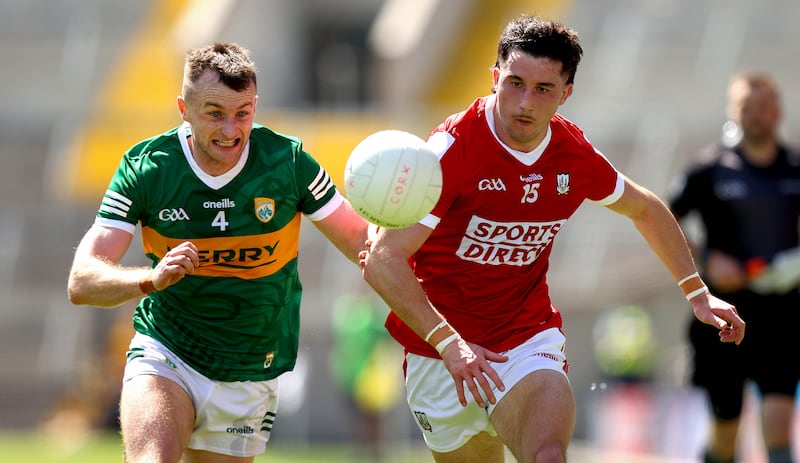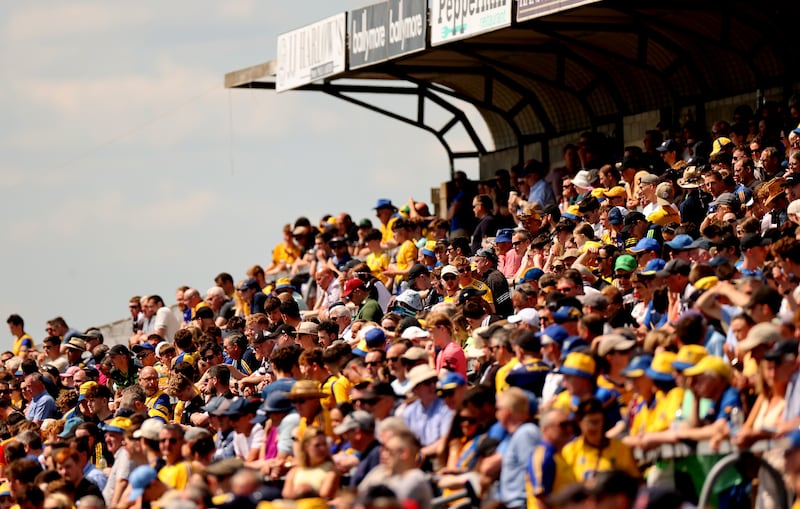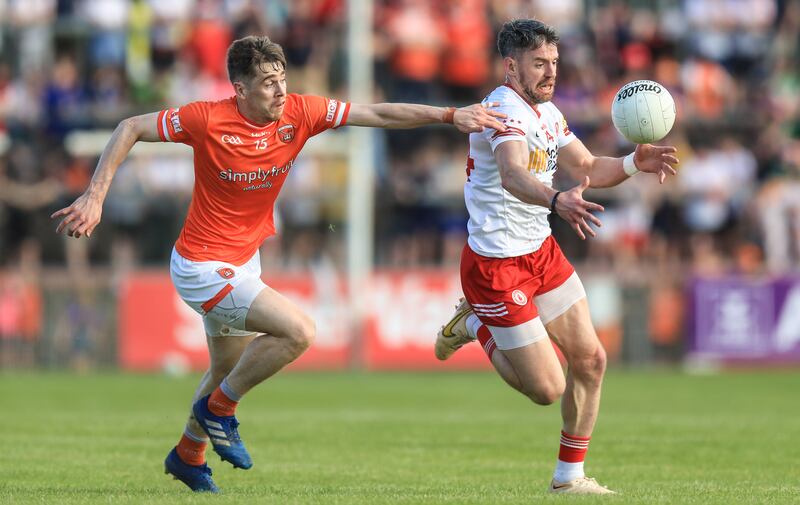Tough crowd: Championship football returns to Nowlan Park
It’s a well-worn part of the foundation story of Kevin Heffernan’s Dubs – to emphasise just how low they had sunk – that they once played a league match in Nowlan Park and were impressed by the size of the crowd. That was until the curtain-raising minor hurling match concluded and 90 per cent of the attendance left.
They have been back since, trouncing Laois in the 2016 Leinster championship, but on Saturday they again returned – nearly five decades on from the year zero of 1974. This time it was to play Kildare, who had opted for the Kilkenny venue to host their home All-Ireland group match, as St Conleth’s Park is under reconstruction.
It’s always interesting to see football come to the Kilkenny venue. It’s a great location and a compact, attractive ground with plenty of seating so it’s no surprise that it gets matches, but it’s also primarily linked to hurling and the associated scepticism about the cultural worth of the big ball.
So, when a big football fixture arrives, it can seem like the Mongol hordes invading a Feis.
Con O’Callaghan thriving in captain’s role for Dublin, and Cork’s dual jewels − what we learned from the GAA weekend
GAA is failing to hit the beat when it comes to their musical choices
Cavan’s defensive record is overestimated by RTÉ’s Paul Flynn
Meath advance over Offaly after quintessential game of two halves
Nickey Brennan, former GAA president and local broadcaster as well as a former manager of both the county’s hurling and football teams, did suggest that the Kilkenny football final might have been brought forward as a support event for Saturday’s fixture, but it’s not scheduled until the end of the month.
All sorts of issues had to be sorted out. Dublin emerged from the old dressingrooms under the Walsh Stand because the team’s entourage was sufficiently extensive not to be able to fit into the away quarters in the Carroll Stand.
Queries were lodged as to whether they bothered to mark the 45-metre line. The answer was that they do.
When the match was done and the crowds drifted away through the sunny June evening, a cheery conversation was had on the merits of the match.
“Football’s hard to watch.”
Aesthetic judgment meets commercial opportunity. – Seán Moran

Good neighbours Cork give Kerry a run for their money
It is a source of great annoyance to Kerry when Cork are no good. It is a conflicted position, naturally, because they don’t want Cork to be a mortal threat, just good enough to encourage some early-season modesty and maybe help compile a snag list. What they can’t say out loud, but what is screaming inside their heads, is that they needed last Saturday’s game against Cork a month ago in the Munster final.
Instead, Kerry won their two Munster championship matches by an aggregate of 34 points and were so undercooked for the mezzanine phase of the football championship’s slow and winding stairs that Mayo treated them like a training drill.
On Saturday Kerry beat Cork for the 11th time in their last 12 championship meetings. In some of those games Cork were embarrassingly passive and outclassed. On Saturday, they didn’t play with any deference, or sense of fatalism. They didn’t stand back. According to the statisticians on The Saturday Game, Cork won the turnover battle in the middle third, a reliable metric for their aggression and drive.
Cork were visibly bothered about letting a winning chance slip away, as they should be; Kerry went home with their snag-list updated. And grateful to Cork, of course, for, you know, giving them a game. Isn’t that what neighbours are for? – Denis Walsh

Sluggish Sligo still in with a shout – courtesy of new championship format
You don’t need a weatherman to know which way the breeze blows, and on arrival in Roscommon around lunchtime on Sunday, any relief from the easterly was long gone. Dr Hyde Park was steaming.
Immaculate championship conditions, perhaps, match essentials including sun cream and of course the shades. By 3pm throw-in, the Roscommon supporters were in fine voice. The Sligo support was thin on the ground.
There’s plenty of debate around the interest and value – and particularly the entertainment part – of the Sam Maguire round-robin competition, spread over three weekends, all to eliminate just four of the 16 teams.
Attendances are apparently reflecting that interest, the 5,733 in Dr Hyde Park down on expectations, and almost exclusively from Roscommon. Likewise with the 8,216 that attended the Dublin-Kildare match in Kilkenny, even the 14,081 that attended Cork-Kerry below all traditional attendances between the two teams.
At least Roscommon’s 10-point win over Sligo leaves Group 3 with something to play in the last round, on the weekend after next. One point ahead of Dublin, on scoring difference, if Roscommon can beat Kildare by more than Dublin beat Sligo, they’ll go straight into the quarter-finals.
Kildare and Sligo’s fate will also be likely decided on scoring difference, unless Kildare can beat Roscommon, or Sligo can beat Dublin, which means one of those teams is likely to progress to the preliminary quarter-final without winning a single game.
Given they both lost their provincial finals, it would mean four games without a win; yet they’re still in contention. Hardly good old championship fare.
In the still blissful sunshine afterwards, Sligo manager Tony McEntee effectively admitted that progression to the quarter-finals, preliminary or otherwise, was never their priority.
“For us, really, progression would be an added bonus,” he said. “I’ve been saying that all year, our goal here is to learn and develop and try to improve game to game. We want to compete against these top teams, learn from it. If we progress, great, but it’s not the overriding issue, we still have a gap to close.”
And what about Sligo’s prospects against Dublin in the final round?
“I don’t think anyone expects us to beat Dublin, let’s be honest,” he said.
Expect the attendance to be well down in that game too. – Ian O’Riordan

In Omagh, The Andrew Murnin Show comes at a price
Talk down Gaelic football all you like but every once in a while, it’s impossible to deny the skills of modern players. Saturday night in Omagh might not be the first place you’d choose to highlight it – a knotty, goalless game between two counter-attacking sides. But if you went or you watched, you got a treat in the fetching ability of Armagh’s Andrew Murnin.
The real pity in all the rigidity and systems is that you have to wait until these games open up down the stretch to see it all in action. Armagh were a man down and chasing the game late on so Ethan Rafferty had to go long with his kick-out. Murnin came gliding through the air for a couple of them, looking like a circus performer effortlessly interesting with a trapeze rope.
For his final one, deep in injury-time, you could see him make his run from a good eight yards away. He was like a high jumper counting out his run-up, before trampolining highest in a thicket of players to take the catch and lay it off. No sooner had he done so than he crumpled to the ground with cramp. Even beauty takes its price. – Malachy Clerkin












